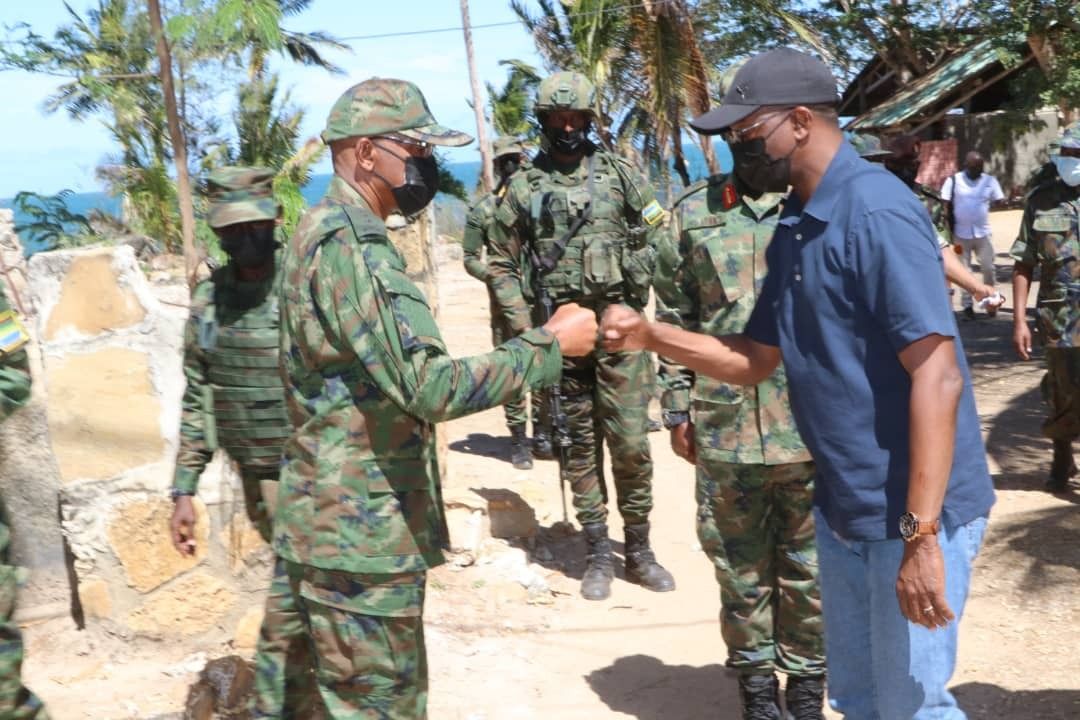From Cabo Ligado Monthly: November 2021, published 15 December 2021
One notable shift in the conflict in northern Mozambique in November has been the breakdown in defined areas of responsibility for the foreign forces intervening on the Mozambican government’s behalf. At the beginning of SAMIM’s deployment in Cabo Delgado, the apparent division of labour between the SADC force and the Rwandan military was relatively clear. The two forces would divvy up the work of counterinsurgency not by mission but by area, with the RDF taking responsibility for Palma and Mocimboa da Praia districts while the smaller SAMIM force focused on the calmer districts of Macomia, Muidumbe, Mueda, Nangade, and Quissanga districts. That division held for months, even as Rwandan officers complained that insurgents they pushed south across the Messalo river were not being captured by their SAMIM counterparts in Macomia district.
In November, however, reports began to emerge that RDF units were appearing in locations within SAMIM’s area of responsibility. During the week of 22 November, RDF troops occupied the village of 5º Congresso in Macomia district, some 25 kilometers south of the Messalo. The move appeared to be a response to ongoing insurgent activity in the village — insurgents had attacked the village twice in the previous two weeks. Speaking to sources on the ground, it quickly became clear that the Rwandan mission in 5º Congresso reflected a shift in perception -- and perhaps strategy — among the intervening forces.
Increasingly, people living in the conflict zone view the work of the intervening forces as being divided not along geographic lines but among different roles. SAMIM, as one source put it, “are there to maintain stability, [and to] provide protection” to civilians in the areas where they are deployed. The RDF, conversely, are seen as the sharp end of the spear, the force that gets called in to conduct offensive operations when insurgents are operating on the front foot. Their use as offensive forces extends beyond their recent push into Macomia district. In addition to the 5º Congresso operation, Rwandan forces were also spotted in Mueda district near Ngapa following insurgent attacks there, and in Niassa province’s Mecula district following the beginning of insurgent operations there. Conversely, shifts in SAMIM forces have largely been non-combat focused. The Lesotho Defence Force announced recently that, in early November, its contingent of troops had moved temporarily from Nangade to Muidumbe district to destroy five deserted insurgent camps.
On one hand, there are some short-term positives to this new distribution of labour for the pro-government coalition’s counterinsurgency effort. The RDF, the largest single foreign force in northern Mozambique, has the resources to conduct offensive operations in multiple areas around the conflict zone. There have been no reports of blue-on-blue violence, suggesting effective coordination between RDF and SAMIM forces, and, at least in 5º Congresso, Rwandan intervention appears to be useful. There have been no further insurgent incursions into the village since the Rwandans arrived (although other insurgent operations in Macomia district are still ongoing).
Yet, in the long term, the shift in perceptions of SAMIM and the RDF could be damaging to the counterinsurgency effort. As the conflict rages on despite Mozambican government assurances that it is winding down, the need for offensive action beyond basic civilian protection is likely to expand. At the same time, SAMIM’s apparent inability to take on that role is already beginning to undermine local confidence in SADC forces. Local sources in Macomia district expressed frustration with ongoing violence there despite SAMIM deployment in the area, and residents of Mecula district have publicly declared that they see Rwandan intervention there as being their only hope of seeing order restored to the district. If RDF troops become the sine qua non of security provision in northern Mozambique, it will both stretch the resources of the Rwandan deployment and leave the security situation in the region hostage to the whims of the Rwandan government. That quickly turns into a vicious cycle, in which growing demands on the RDF increases resource pressure for Rwanda to draw down its deployment, generating further insecurity.
The core problem for security provision in Cabo Delgado is that there are few troops in the pro-government coalition and a huge amount of geographic area that they must protect as civilians return to their homes. A situation in which RDF troops are responsible for responding to insurgent attacks in an ever-expanding area is not sustainable in the long term. SAMIM and Mozambican forces will have to prove themselves capable of conducting effective offensive operations if the pro-government coalition is to durably alter the security situation in northern Mozambique.









